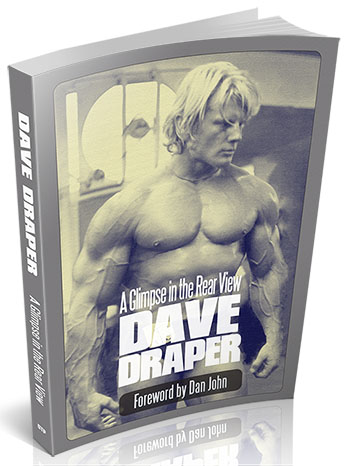HIT Training for Bodybuilders
A
Brief Primer on High Intensity Training
Page 1 of 4
Written
By Steve Wedan
Click
here to view a Steve Wedan drawing
Click here to read of Steve's experiences with Arthur Jones and Casey Viator
As with any living thing, HIT has grown, developed and re produced into several versions of itself since its early days. The purpose of this discourse is to obey Laree Draper, who told me to write it up; secondarily, it is to give the Draper OnLine crew some insight into a few variations of this school of thought, an approach to our favorite subject, bodybuilding.
My sources take two basic forms, the people I have known and the books I have read. Those with whom I have spent varying lengths of time and conversation include: Arthur Jones, with whom I had three personal discussions in the 1970s (actually, no one really discusses anything with Arthur, one shuts up and listens to his lectures); Ellington Darden, with whom I developed a professional relationship beginning in the mid-1980s, when I was writing for some of the muscle magazines, and who has lent me considerable insight into both training and life; Ken Hutchins, the main promoter of SuperSlowTM training, another man whose level of intelligence is other-worldly and whose tendency to reek knowledge rivals Arthur Jones's; and Stuart McRobert, a man whose friendship I truly cherish. Stuart's books and magazines, in fact, are what set this entire thing in motion a few weeks ago, when some of us mentioned him and his ideas in the online group.
Like many, I've also read (or is that memorized?) the writings of Mike Mentzer, whose career I followed ever since he was a local teenage hero in Maryland, not too far from my current home, Virginia.
Some of those in the group might seek to correct what I submit here, and such input is welcome. But ya gotta go through Laree, the digital doorman at this joint.
Let's start with the beginning of modern HIT. In the late 1960s, Arthur Jones began writing articles for Muscular Development magazine (he might have been writing for other magazines at the time, but I am not aware of it; the great John Grimek was editing MD at the time, and he seemed to welcome what Jones wrote). His by-line was Art Jones back then, and his articles contained a foreshadow of the bombast which in a few years would make him known throughout the bodybuilding world.
In short, his recommended workouts were full-body routines and contained as many as twenty exercises. He instructed trainees to work out three times per week and to do three sets of every move. The only thing that didn't change over the next few years was his insistence on putting everything you've got into every set of every exercise. About the only movement not to be done to absolute, utter failure was squats, for the simple reason that getting up "out of the hole" was dangerous and difficult at best, after having failed with a heavy bar across the shoulders.
Over the next handful of years, as his Nautilus machines began to appear and he began his famous series of articles in Peary Rader's Iron Man, Arthur's recommendations underwent modification. Exercises were limited in number, and the number of sets he advised doing became two per exercise. One article in the early 1970s taught the trainee to do two sets of six barbell exercises. It remains one of the most result-producing routines I've ever done.
Soon, he was printing such statements as, "It only takes one bullet to kill an elephant. Any more destroys the meat." This was his way of saying, "Why should even a very strong individual perform more than one set of exercise, if that set has created the proper stimulus for growth?" By way of proving his approach, he set up at least two experiments in which subjects followed a high intensity routine and were tested before and after the time period set up. One was conducted in 1975 at the U.S. Military Academy at West Point. It was the result of this that the concept of "metabolic conditioning" first was published. (Essentially metabolic conditioning is not just strength and not just stamina, it's something involving both. It is more than the sum of anaerobic and aerobic conditioning; it's a synergy, or gestalt. The results shown in the final testing event were remarkable both for the strength and the endurance these individuals exhibited, even though no running or other conventional exercise was performed -- just HIT on Nautilus machines).
Intensity should be understood, though, as something that is physical. The word is bandied about in muscle magazines and chat groups, and based on such sources, one might be forgiven for thinking that intensity is an inner thing, that it's relative. It's not. It's the amount of work one does over time. As with any fraction, the smaller the denominator (time), the greater the value (intensity). Also, the greater the amount of work (the numerator) over the same amount of time, the greater the intensity.
Mental intensity, on the other hand, is synonymous to focus: When one attacks a set of exercise like a berserker, one's focus is great. But the workload might or might not be intense.
Click here to go to page two of the HIT primer
Steve
Wedan is an artist and writer. He also
is a contributor to the IOL Forum.
You can see and order his new print of Dave by clicking on this link.
Click here if you missed Steve's article on Arthur Jones and Casey Viator

